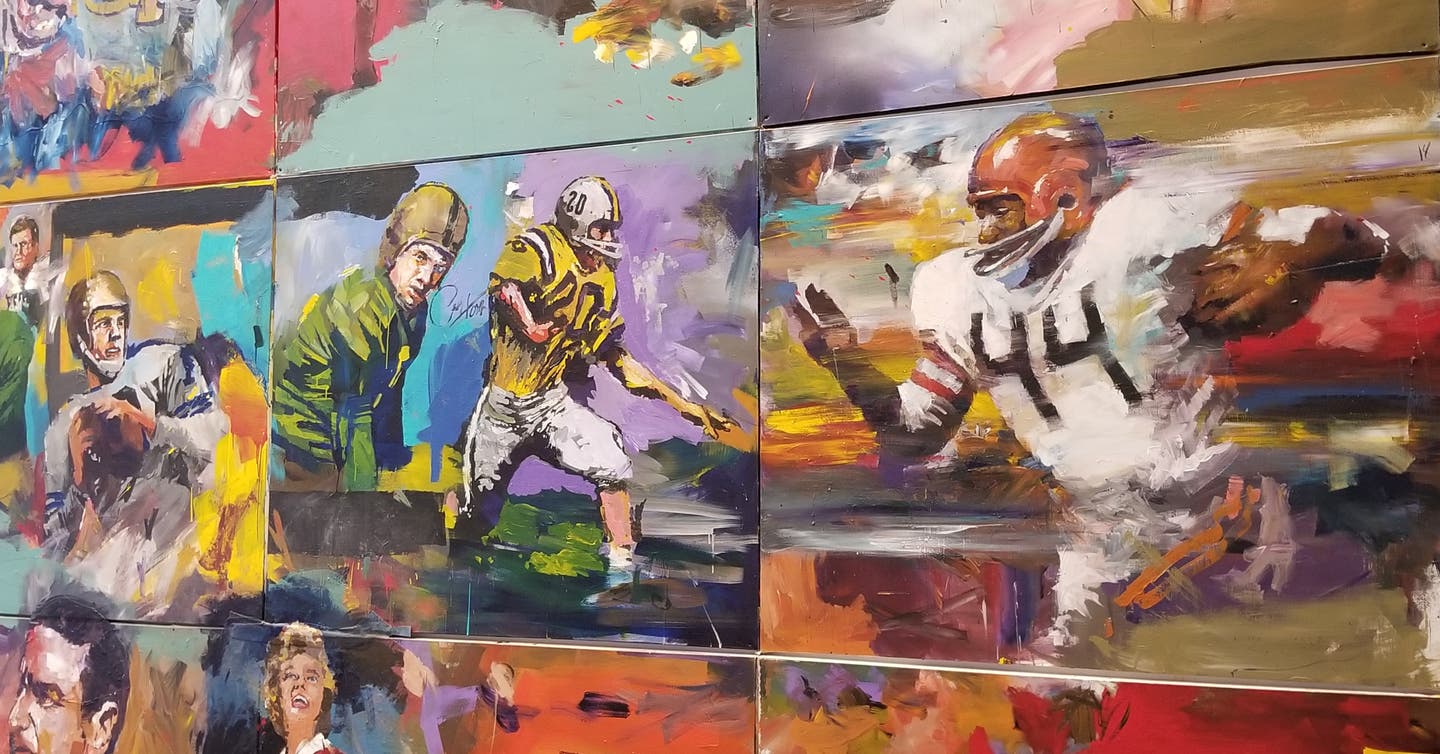
News
College Football Hall of Fame a Winner
Having lived my entire life within a couple hours of Cooperstown, I’m naturally partial to the National Baseball Hall of Fame when it comes to sports shrines.
The idyllic, small town at the south end of upstate New York’s Otsego Lake is the kind of place baseball should have originated, even if Abner Doubleday didn’t invent it and Cooperstown’s reputation as the game’s birthplace is entirely mythical.
The setting conjures up everything baseball purists enjoy most about the game by preserving an atmosphere that lets visitors step back in time to savor the sport’s long, rich history.
Last year, however, I was not only pleasantly surprised but totally amazed by the variety of in-depth, educational and entertaining interactive displays at a different Hall of Fame in Atlanta: the Chick-fil-A College Football Hall of Fame, which turned out to be a truly eye-opening experience.
Where else can you don a headset and join fellow “College GameDay” analysts for a breakdown of the week’s top gridiron showdown? Hop in the broadcast booth and make your own call of a thrilling 70-yard touchdown pass and catch? Or, thanks to virtual reality, feel what it’s like to take the snap at quarterback with massive pass-rushers coming at you and 80,000 enemy fans in the stands?
There’s even a 45-yard indoor playing field that gives kids a chance to throw a TD pass or kick a field goal through regulation-size uprights
A trip to the Hall renews enthusiasm for the sport while giving fans a deep, fond appreciation for its long, rich and colorful history. In 2019, college football celebrated a major milestone, its 150th anniversary. It all started in 1869 with a pair of contests between Rutgers and Princeton.
Hall of Fame visitors are greeted by larger-than-life size photos of the game’s biggest stars, each one representing a different major conference such as Alabama quarterback Tua Tagovailoa (SEC). This leads to a main lobby called The Quad where the helmets of more than 770 college teams are hung on a three-story high wall. Guests personalize their visit by choosing their favorite team and following it digitally throughout the museum.
Having grown up a fan of the Fighting Irish, I naturally chose Notre Dame, which has more Hall of Fame inductees (44) than any other school followed by USC, Michigan and Ohio State.
Overlooking the Quad, guests are treated to a 30-foot canvas painting by artist Steve Penley that honors many of the greatest players, coaches and moments in college football history.
In the actual Hall of Fame Rotunda, touch screens bring football heroes to life with detailed biographical information about their star-studded careers. As an upstate New York resident, my attention was also drawn to all-time great Syracuse running backs Jim Brown, Floyd Little, Larry Csonka and 1961 Heisman Trophy winner Ernie Davis, the award’s first African-American recipient.
Fascinating exhibits outline the sport’s evolution, including drastic changes in equipment, training techniques and the size, speed and strength of athletes now compared to yesteryear. For example, one display explains how Notre Dame was among the first teams to implement formal weight-training, which helped it win a national championship as linemen overpowered their opponents. This was a revolutionary change from the early 20th Century, when players from rural areas built strength by tossing hay bales around.
Also in the early days, players wore leather helmets without face masks. As one display says, “The first college football players wore street clothes and virtually nothing to protect them from injury. The first piece of protective equipment was a nose guard designed by Princeton All-America quarterback Edgar Poe, who was named after his great uncle, Edgar Allan Poe.”
In another area, fans get to develop their own game plan with “X’s and O’s” while learning strategies used by legendary coaches throughout the ages, from Knute Rockne to Nick Saban.
Of course, the game’s most impressive trophies and awards are also on hand in addition to an endless array of memorabilia such as posters, pennants and football magazines. This includes a display dedicated to the 2020 National Champion LSU Tigers, who defeated Clemson, 42-25, at the Superdome in New Orleans. The Tigers’ Heisman Trophy winner, quarterback Joe Burrow, threw for 463 yards (31-for-49) and five touchdowns. The exhibit includes a game ball, LSU jersey, National Champions cap and souvenir program.
Other extensive exhibits tell the story of iconic events such as the Rose, Orange, Cotton, Peach and Sugar bowls.
The Ivy League produced one of the game’s most historic rivalries, Harvard-Yale. One display pays tribute to former Yale coach Carm Cozza, who led the Bulldogs to 10 league titles during his tenure (1965-99) and a record of 179-119-5. He was inducted to the Hall in 2002. Artifacts from his career include three footballs from his 68th win (most all time at Yale), and 100th and 175th wins, plus a Yale football poster he autographed.
Of course, Army-Navy might be the greatest spectacle of all between long-time rivals.
Under the leadership of General Douglas MacArthur, legendary Army coach Earl “Red’ Blaik and famed journalist Grantland Rice, the National Football Foundation created the College Football Hall of Fame in 1951. It started out in Manhattan where memorabilia and artifacts that tell the game’s story were collected.
From there it moved to Kings Mills, Ohio, followed by South Bend, Indiana, before opening its doors to the public in a sparkling new home in Atlanta on Aug. 23, 2014. The Hall is one of several major area attractions, including the Georgia Aquarium, World of Coca Cola and CNN Studio Tours surrounding Centennial Park in downtown Atlanta, where the 1996 Summer Olympics were held. Visitors should consider buying a CityPASS, which provides admission to these, the College Football Hall of Fame and a choice of several other sites.
The Chick-fil-A College Football Hall of Fame is located at 250 Marietta St. NW. For information go to cfbhall.com.








